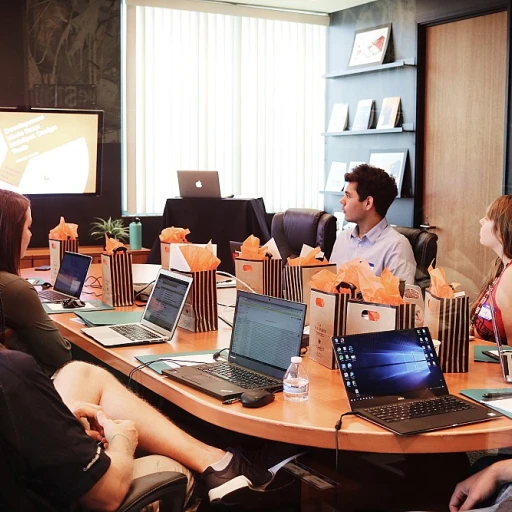
The Basics of the Dreyfus Skill Model
Understanding the Core Elements of the Dreyfus Model
The Dreyfus Skill Model is a foundational framework in the realm of skills acquisition, describing stages of development from novice to expert. This stage model, initially formulated through extensive empirical study, stands as a testament to how individuals undergo a transformative journey in skill development.
At its core, the model delineates five stages of skill acquisition:
- Novice: Here, individuals rely heavily on rules and procedures, lacking comprehensive experience. This stage is characterized by context-free instructions and minimal situational assessment.
- Advanced Beginner: As confidence grows, reliance on explicit knowledge wanes. Problem-solving becomes more intuitive, though still bound by concrete rules.
- Competent: At this stage, practitioners start utilizing frameworks for decision making. Their knowledge acquisition leads to an enhanced understanding of contexts and their roles in situations.
- Proficient: Implicit knowledge becomes crucial. There's a move towards a holistic view of situations, prioritizing and validating information more efficiently.
- Expert: Operating almost effortlessly, experts navigate complex problems using a deep, hard-earned understanding of their field, where rules often become second nature.
The Dreyfus Model emphasizes the transition from reliance on explicit, repetitive actions to the integration of implicit, context-rich decision-making processes. This progression involves not only the accumulation of knowledge but also its application in various contexts, highlighting the nuanced nature of skills acquisition. Recognizing which stage an individual or team member is at is crucial for tailored upskilling approaches, promoting efficient growth and expertise development.
Applying the Dreyfus Model to Upskilling
Applying the Dreyfus Skill Model for Enhanced Skill Development
The Dreyfus Model provides a comprehensive framework for understanding how individuals acquire new skills and transition from being novices to becoming experts. This five-stage model is particularly useful for structuring effective upskilling strategies.- Novice: At this initial stage, individuals rely heavily on explicit knowledge and rules. They lack the context-specific insight that guides decision-making.
- Advanced Beginner: Here, experiences in various contexts start to inform the development of implicit knowledge, allowing for basic problem-solving.
- Competence: This stage sees learners developing problem-solving skills and making use of logical decision-making processes.
- Proficiency: Individuals begin to intuitively understand action in context with fewer rules needed, blending both implicit and explicit knowledge.
- Expert: Decision-making becomes intuitive with deep experience driving sophisticated problem resolution.
Identifying Your Current Skill Level
Recognizing Your Unique Level of Proficiency
Before embarking on any upskilling journey, it's crucial to identify your current position within the Dreyfus model of skill acquisition. The model distinctly categorizes skill levels ranging from novice to expert. Understanding these stages can be pivotal to effective skill development, helping you map a path for growth and advancement.
When assessing where you stand, consider the following questions:
- Do you rely heavily on rules and procedures when approaching tasks? This often typifies a novice stage, where knowledge is mostly explicit and context-free.
- Have you moved to an advanced beginner status, starting to see the relevance of context in your decision making? Notice if you're using previous experiences to influence problem solving.
- As you gain more experience, do you find implicit knowledge guiding your actions more intuitively? This shift is a clearer indication of moving towards proficiency.
In the framework, a key to recognizing your level involves reflecting honestly on your learning journey and pinpointing where you might need additional guidance. The goal is to enhance your skills effectively, applying specific strategies based on your current position.
Once you have identified your level, it becomes easier to fill knowledge gaps and strategize moving through the stages. Be it a reliance on rules or a mastery of context, clear understanding helps in structuring a meaningful progression in your professional journey within a team or organizational context. Moreover, working with peers, such as team members, can provide diverse perspectives necessary for advancing through each stage model.
Strategies for Progressing Through the Stages
Strategies to Advance Through the Dreyfus Stages
Progressing through the Dreyfus Skill Model stages requires a strategic approach to skill acquisition and development. Each stage, from novice to expert, demands a different focus and method of learning. Here are some strategies to help you move through the stages effectively:
- Embrace Explicit Knowledge: At the novice level, focus on understanding the rules and procedures. This stage is about learning the basics and acquiring explicit knowledge. Use resources like manuals and guidelines to fill in the gaps in your understanding.
- Practice in Context: As you transition to an advanced beginner, start applying your knowledge in real-world contexts. This helps in developing implicit knowledge and understanding how rules apply in various situations.
- Seek Feedback: Regular feedback is crucial for skill development. Whether from mentors, peers, or self-assessment, feedback helps identify areas for improvement and reinforces learning.
- Engage in Problem Solving: At the competent stage, focus on problem-solving and decision-making. This involves analyzing situations and applying your skills to find solutions, enhancing your ability to operate independently.
- Reflect and Adapt: Reflection is key as you move towards proficiency. Analyze your experiences, adapt your strategies, and refine your skills based on what works best in different contexts.
- Mentorship and Collaboration: Learning from experts and collaborating with team members can accelerate your journey to becoming an expert. Engage with those who have more experience to gain insights and broaden your perspective.
Remember, skill acquisition is a continuous process. Each stage of the Dreyfus model presents unique challenges and opportunities for growth. By adopting these strategies, you can effectively navigate through the stages and enhance your skills over time.
Challenges in Skill Development and How to Overcome Them
Navigating the Obstacles in Upskilling
When engaging in skill development through the Dreyfus model, it's crucial to acknowledge that challenges are an inevitable part of the journey. As individuals progress from novice to expert, they encounter numerous hurdles that can impede learning and acquisition of skills. Here are some common challenges and strategies to overcome them:- Assimilating New Knowledge: Each stage demands assimilation of both implicit and explicit knowledge. Novices might struggle initially with explicit rules and procedures, while advanced beginners may find it difficult to fill the gap between theory and practice. Overcoming this requires consistent practice and guidance from experienced team members who can offer context and real-world application.
- Decision-Making Under Uncertainty: At mid-stages, such as competent and proficient, decision-making can be daunting. Here, individuals must integrate existing knowledge while adapting to new contexts. Encouraging a culture of problem-solving within teams can ease this transition, enabling learners to gather valuable input and insights from others' experiences.
- Resistance to Transition: Transitioning from stages can at times feel like a hurdle. Resistance often stems from comfort in existing skill levels. Encouraging ongoing learning culture and setting clear skill development goals aligned with the learner's professional aspirations can mitigate this.
- Over-reliance on Explicit Knowledge: The Dreyfus model emphasizes moving beyond rules and procedures as one ascends into proficient and expert stages. Encouraging practice that fosters intuitive and seamless application of knowledge can facilitate moving away from purely rule-based thinking.











